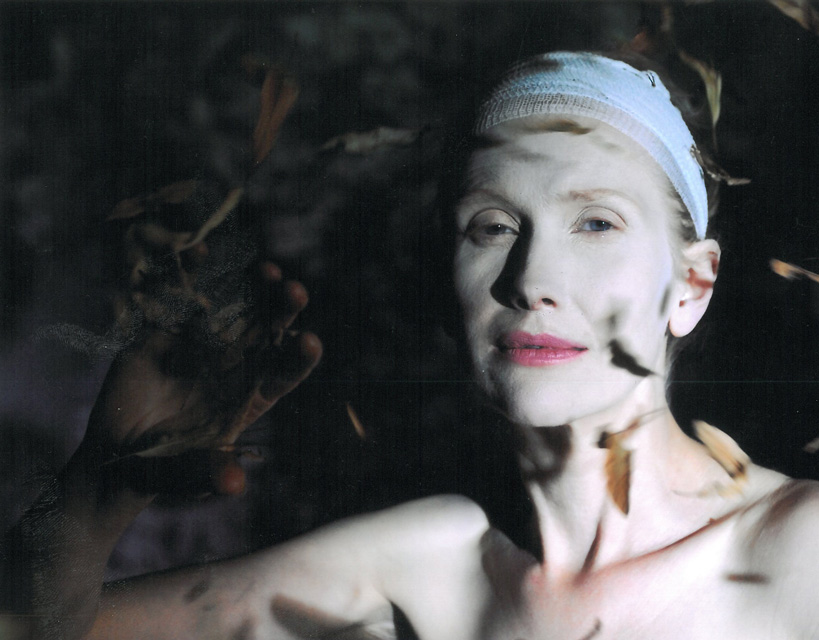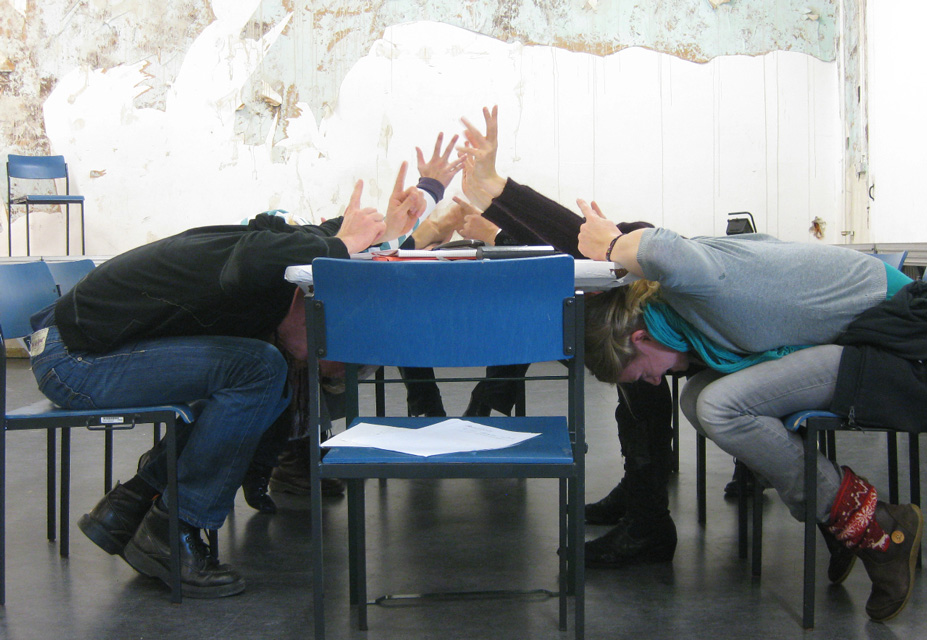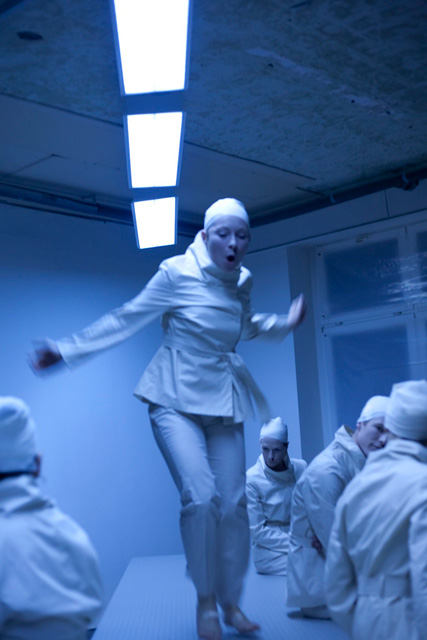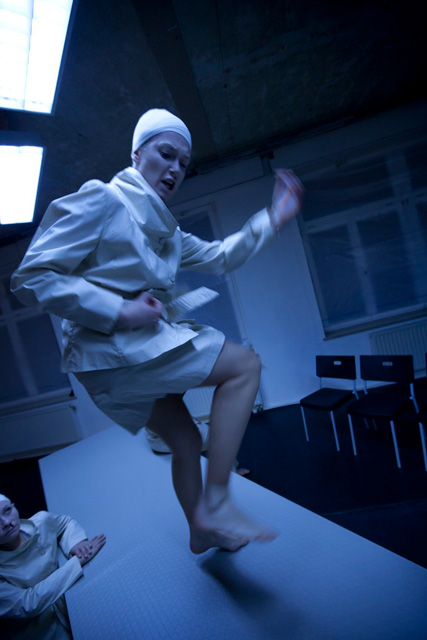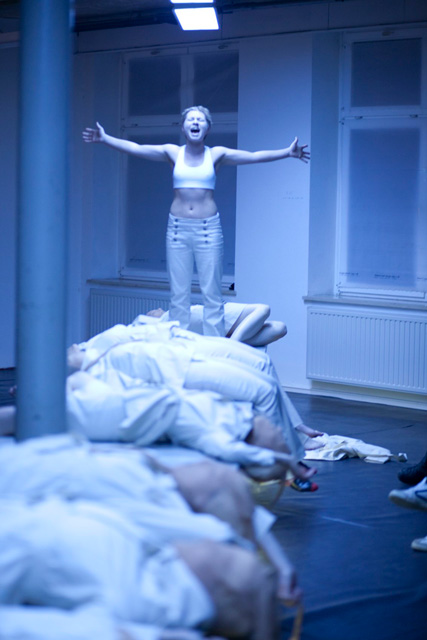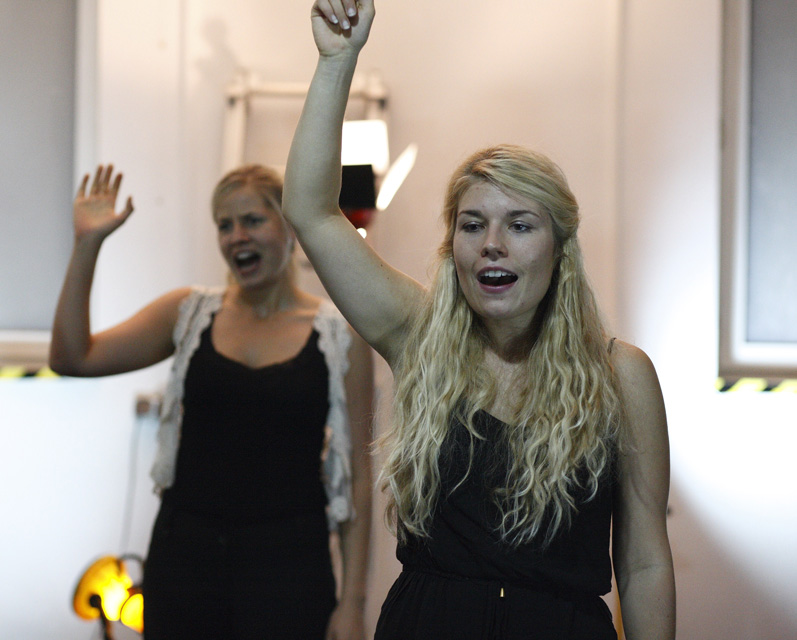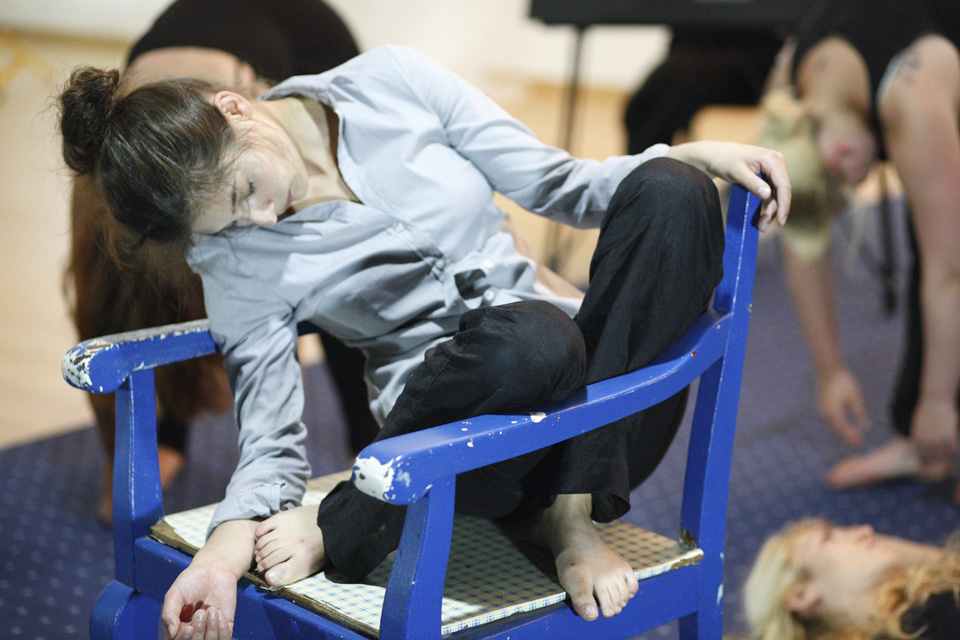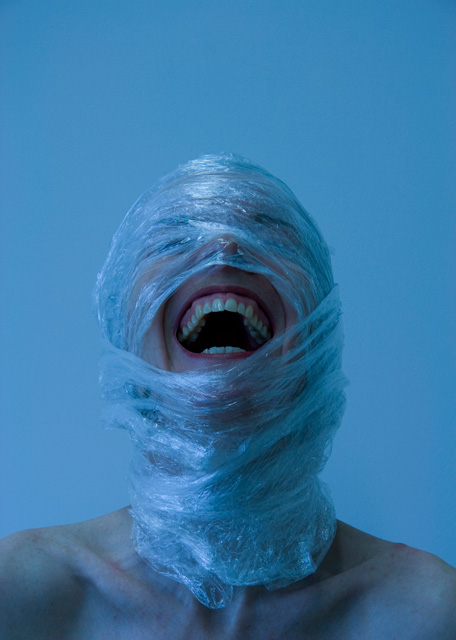In my workshops, I convey techniques of verbal performance. In my labs, exponents of various disciplines and methods are invited to collaborate on a subject.
What is language supposed to achieve?
In all performance arts, craftsmanship is first and foremost embodied knowledge and can only be shared and adapted through doing. To learn a technique means understanding rules on the level of experience. From that vantage, one recognizes aesthetic potential and gains new approaches for one's own artistic work.
You may also ask: what is language supposed to achieve? To bring about communality? To stimulate inner experience? To make possible a nexus with some cultural legacy? To entertain? To inform? To promote confrontation? What are the intentions behind techniques and aesthetics and in what intellectual tradition are they cemented?
My approach is eclectic: the principles of the classical avantgarde and the postmodern, influences from other cultures and contemporary music characterize my mode of working. My primary interest however is the process of language as a relationship between us and the world around us.
My workshops and labs are intentionally conceived as impulses for project work or more generally as an offer to expand your own arsenal of tools for developing your craft.
Some of my central themes are briefly summarized in the Toolbox.
Toolbox
Do we as actors represent and demonstrate something, or do we implement a practice because this is meaningful in itself? Text practice means presenting a text for the purpose of conveying a message (communication); on the other hand, it is the realization of a text whose meaning is initially evoked (new) in an act of speech (cognition). Exploring this difference and developing a feeling for the various effects is a continual source of excitement. Whether you call a production a "performance", a "presentation", an "adaptation" or an "installation", whether our work is narrative or beyond fiction and linearity, the question is identical: how to position oneself between the two poles. None of the techniques mentioned below can relieve you of making a decision. It's our duty to evaluate: all the more because the borders are blurred.
Performers try to engage a text as "a store of memory". They concentrate on a line or passage and pass on the resulting stimulation – uncensored – to the voice by articulating words. This approach is derived from musical improvisation and is particularly fertile as a dialogue between vocal and instrumental voices. Especially challenging in this practice: Every utterance has its validity; there is no need to make corrections. At the same time, the broad vocal range everyone has is being utilized. Semantic comprehension will fall short or is exceeded – at least in part.
What role should the body play in a performance and in the act of speaking? Maybe this: the body directs verbal expression while meaning reveals itself. Which is to say: first a text gets translated into physical action through associations (not naturalistically, not illustratively but with clear contours). This choreography of the body is relegated to the voice. Since the body in action is strewn with impulses from affective states, the voice assumes the nuances that awaken our attention because these impulses are vital and not completely predictable. Genuine sound figurations are the result and texts come about – as in the case of vocal improvisation – from very familiar intonations and references. But let us not choose mental concentration as the starting point but the embodiment itself. The goal is to make semantic content real.
A body speaking, exact wording and textual content are always effective as a unit in an act of speech. And yet, in rhythm, the simultaneity of physique and meaning are amplified perceptibly and evoke the affective experience of a text. This is what makes reciting verse and other rhythmic methods suggestive. In many traditions of speech, an intensification of the relationship between man and nature is the goal of rhythmic speech. In practice it is always a balancing act: to trust rhythm while not drowning meaning in rhythm.¹
This most familiar way of speaking is most vulnerable to clichés because we imitate what we know. Not even "cool" styles are immune to that. Whether loud, soft, relaxed or exalted, the most crucial prerequisite – if speech is not to sound affected – is an inner approach that leads to the act of speaking. The core of my entire work is the technique of speech in action by which it is possible to learn to accept the process of speech as something generated from inner motivation. From this starting point, the wealth of possibilities in expression becomes accessible in a natural way. In the training, we explore the complex interaction between body, psyche and intellect mirrored in the act of speech.²
According to an old rule of thumb, a sentence needs to experience its echo at least once for it to unfold. How do words unfold and what do they become if we extend the timespan of an echo? One has to distinguish between a psychologically justifiable pause (I cannot continue speaking or do not speak for a reason etc.) and a temporally effective period for something spoken as a central factor in a composition.
To create an atmosphere in the imagination is a performative technique based on imagination training. A space is seen as an emotional field and can be reversed. Example: we can disperse a feeling of enthusiasm over a joyless place through imagination alone. Astonishingly, an atmosphere produced this way can directly affect the intuitive senses. If we allow ourselves to be governed by such impulses, our actions become more genuine, more nuanced and dynamic than we may have ever imagined. With some practice we can control voice and speech too from an imaginative atmosphere.³
In synthetic speech production individual text reproduction seems to have been abolished. Really? Synthetic speech production – just like speaking and writing – can be utilized not only functionally but likewise in an aesthetically innovative way: i.e., it can be programmed! Exciting media crossovers between writing, images, real and virtual voices and spaces (AR, VR) are imaginable. A very promising subject for a new lab! (It would be possible, for example to link onto the "Korsakow-system" which the media artist Florian Thalhofer programmed for film cutting. The narrative material is not organized along an axis of time but in continually new combinations as "smallest narrative units".)
When dramatic theory stands in contrast to interpretive methods of presentation, we ask what act of speech is the text generating? The verses of a tragedy may prompt us to mourn when speaking them and not just to portray mourning. A song about power may require us to choose speech patterns which subvert the structure of power and not just criticize it. Whatever we decide, some structure is developed – and we turn it into a score. Naturally, neither plots nor acts of speech can be rendered through musical notation in a classical sense. That works only in specific parameters which generate actions and articulation and in this way frame the entire event. Performers are the ones who carry out some practice.4
Comp.: Gumbrecht, Hans Ulrich: Rhythmus und Sinn. In: Pfeiffer, Ludwig (Hg.) Materialität der Kommunikation. Frankfurt, 1988.
The "Speech in action thechnique" is mainly derived from Constantin Stanislavsky.
This method of usning imaginary atmospheres is derived from Michail Chekhov. I teach it in a modified form.
Comp. Houben, Eva-Maria: Musical Practice as a Form of Life. How Making Music Can be Meaningful and Real. 2019.
Reference (a selection)
2017
How to use language after postmodernity?
How to use words in digital times?
With dancers and actors from the Oblivia Theater in Helsinki
2015
Speech_LAB
Participants bring along their own concepts: performer, authors, musicians, dramaturges
In collaboration with Pathos Munich. The Lab was part of a research grant from the Cultural Department of the city of Munich for project development
2013
Russian techniques and oral traditions
Bodies and atmospheres and the development of dramatic scenes.
With performers and authors in London. The workshop was part of a screen writing process
Organized by Tonderai Munyebvu (Tara Theater)
2012
Unplayable stage directions
Body and text between figuration and abstraction. A seminar with students from the „Neue Münchner Schauspielschule"
2011
physical: MONEY
Research on hegemonial structures in language and capital markets.
With performers, video-artists, authors. The Lab was parallel running with a project development in Munich
2010
The „Speech in Action Technique"
Advanced training for professional actors
Schauwerk Dresden Hellerau.
2009
Our bodies direct our voices...
Advanced training fpr professional actors
Dramaten Dresden
2008
Verbal images and photography
With performers and photographers.
The Lab was parallel running with a project development in Munich
